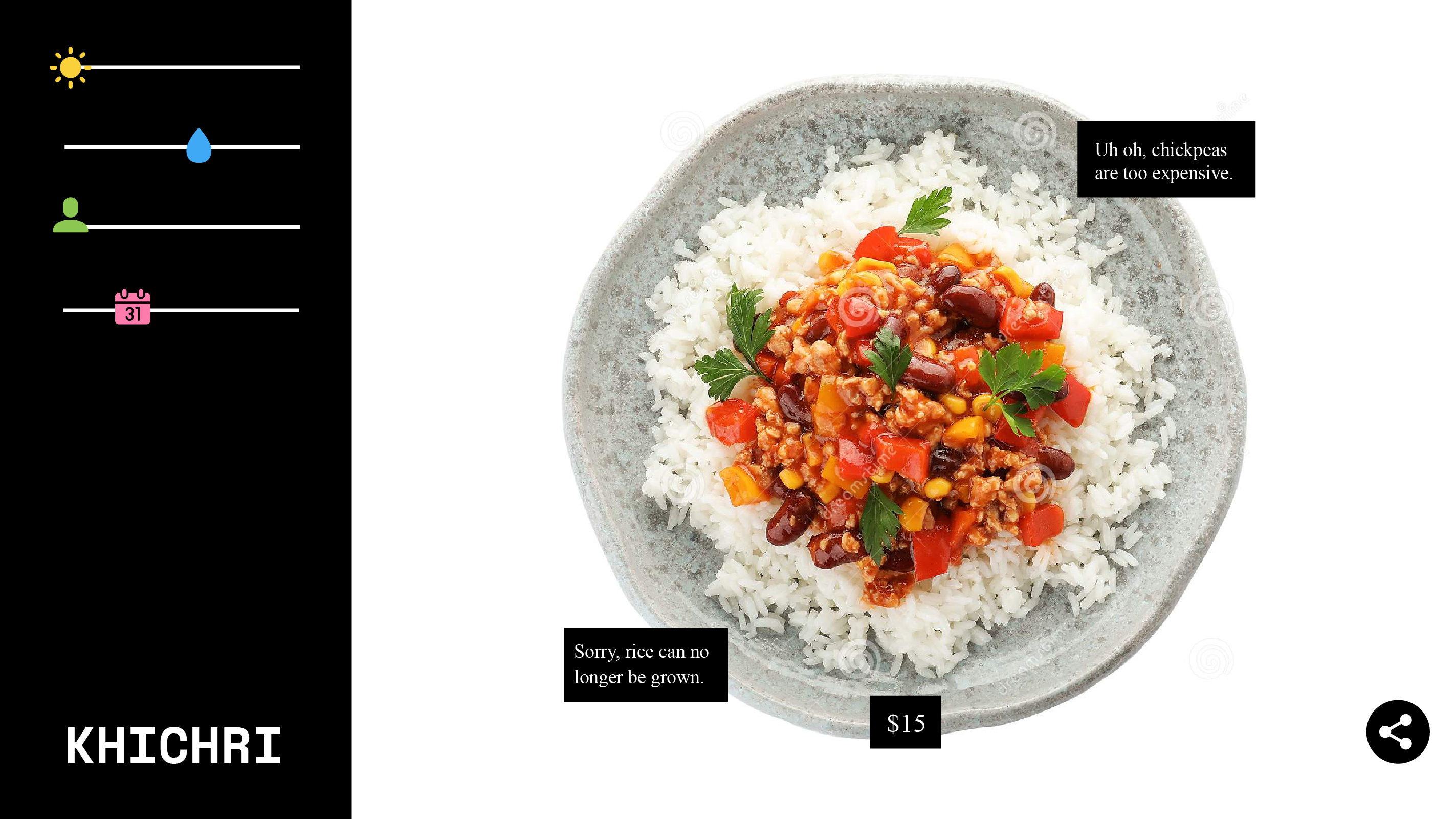
Khichri
Najwat Rehman, Penny W. Stamps School of Art & Design
Pakistan is the fifth-most vulnerable country to the long-term effects of anthropogenic climate change. Rising temperatures, melting glaciers, catastrophic floods, and erratic rainfall have already ravaged the country socially, economically and ecologically: between 1999 and 2018, “Pakistan lost 9,989 lives, suffered economic losses worth USD 3.8 billion and witnessed 152 extreme weather events.” In addition to its many devastations, climate change also threatens agriculture, the bedrock of Pakistan’s economy and society. Declining crop yields due to rising temperatures, falling fisheries productivity amid warming seas, and more dramatic events like this spring’s locust swarm are a few examples that presage the looming crisis of food insecurity. Given inadequate global action and Pakistan’s own limited capacity to effectively address its vulnerabilities, this crisis will only grow worse, crushing the country’s ability to feed its two hundred million inhabitants.
While there is a wealth of data, analysis, projections and recommendations produced regularly by numerous credible institutions, there are access and understandinggaps when it comes to communicating this research at the policy level. The National Food Security Policy (2018) repeatedly highlights the threats climate change poses to Pakistan’s food security, and emphasizes the need for better linkages between the work of disparate actors working in the field, including government units, academia, and research organizations. The importance of these linkages wasagain highlighted recently by Prime Minister Imran Khan himself, and echoed by recognized experts.
While the understandingof the importance of research-based policymaking and the intention of promoting it might be present in the policy document, researcherspoint out the lack of on-ground action, citingfactorssuch as the policy workers’ lack of technical understanding and training. This assertion is supported by a 2009 study in Canada that concluded that “a significant factor affecting the ability of policy-makers to engage in evidence-based policy-making pertains to both governmental and non-governmental ‘‘policy analytical capacity.’’ That is, governments require a reasonably high level of policy analytical capacity to perform the tasks associated with managing the policy process in order to implement evidence-based policy-making and avoid several of the most common sources of policy failures.”
This problem space reveals a promising opportunity for design-led and community-engaged scholarship. Speculative critical design (SCD), a relatively new design approachconcerned with “the creation of utilitarian artifacts whose primary purpose is communicative,” offers a way to strengthen the link between researchers and policymakers by translating technical findings and recommendations into ‘food futures’–visual scenarios of food (in)security in Pakistan based on rigorous research and projections –that can help policymakers, who often are not subject matter experts, engage with the research and pursue evidence-based policymaking to address Pakistan’s climate change vulnerabilities. With a specific focus on sparking reflection and discourse, SCD is also well-suited to engage the general public in the conversation about climate change through the localized, relatable and visual scenarios, helping improve understanding and concern for the already visible and looming impacts of climate change.
The primary outcome of this project is an interactive website that presents users with images of popular food items and allows them to manipulate factors such as environmental heat, water availability, population growth, and extreme weather events to determinehow these factors influence the availability, affordability, and composition of these foods. Guided by an intention to make complex scientific and statistical information easy to understand for policymakers and the general public, visual and interactive design are important considerations of this project. Although the app will be designed in collaboration with stakeholders through co-design workshopsstartingin November, an initial proof of concept image is attached as part of this proposal to help the grant committee visualize the project. In addition to the website, a research paper detailing the process and findings will also be produced. This is important considering the various scholarly areas this project spans, most importantly science communication and speculative critical design.
